It is natural to assume that America’s landmarks have always been a part of our national fabric. It’s hard to imagine the National Mall without the Washington Monument or Mount Rushmore without, well, Mount Rushmore. But a look back into the archives at the Library of Congress shows the “in progress” stages of some of the nation’s most treasured sites. Whether it’s a scaffolding hanging off the White House or two hunks of steel in place of the St. Louis Arch, these photographs paint a picture of a country in the process of making its own history.
1. Golden Gate Bridge
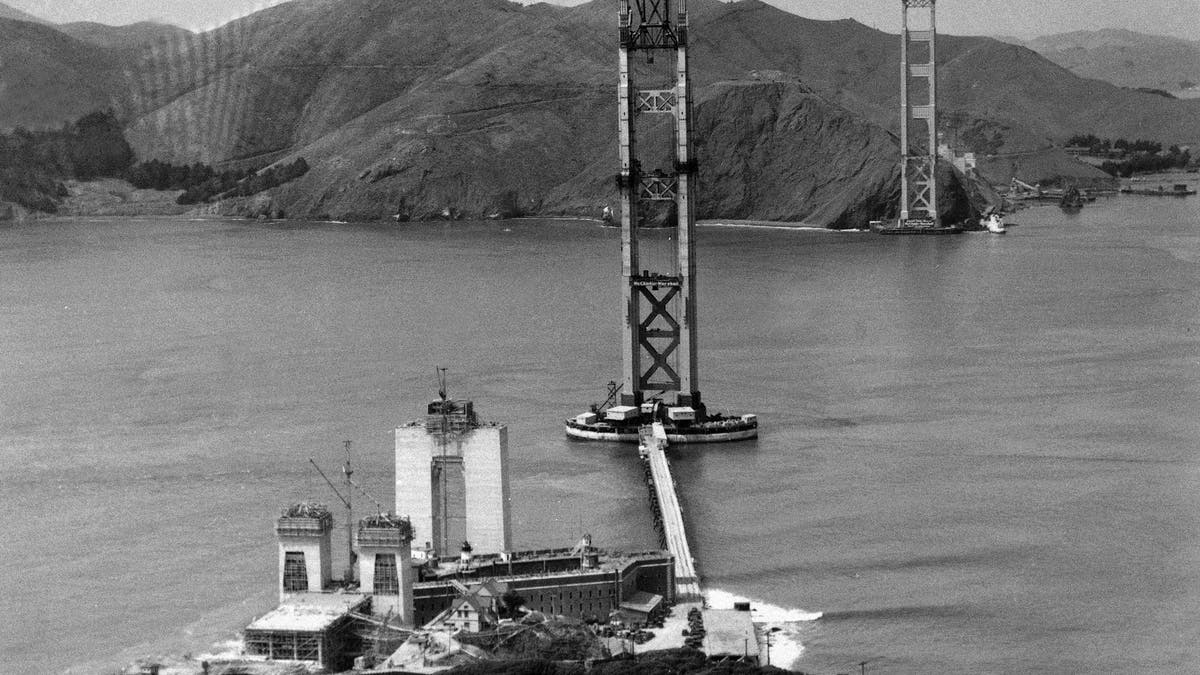
The construction of the Golden Gate Bridge, which will link Fort Point, bottom, with Marin County, Calif., top, is seen as work progressed, 1934. (AP Photo/Redwood Empire Association) (Library of Congress)
Construction began on the Golden Gate Bridge on Jan 5, 1933. Upon its completion in 1937, the bridge had a 4,200-foot-long suspension span, making it the longest suspension bridge in the world. Since opening to the public in May 1937, almost 2 billion vehicles have crossed the bridge.
2. West Wing of the White House

(Library of Congress)
In 1902, President Theodore Roosevelt relocated his office from the second floor of the residence to the newly constructed West Wing of the White House. Designed by New York architects McKim, Mead & White, the West Wing was designed to be a temporary office space from which the president could work. While today’s West Wing has undergone several renovations and transformations since then, it remains the official workplace of the President.
3. Lincoln Memorial
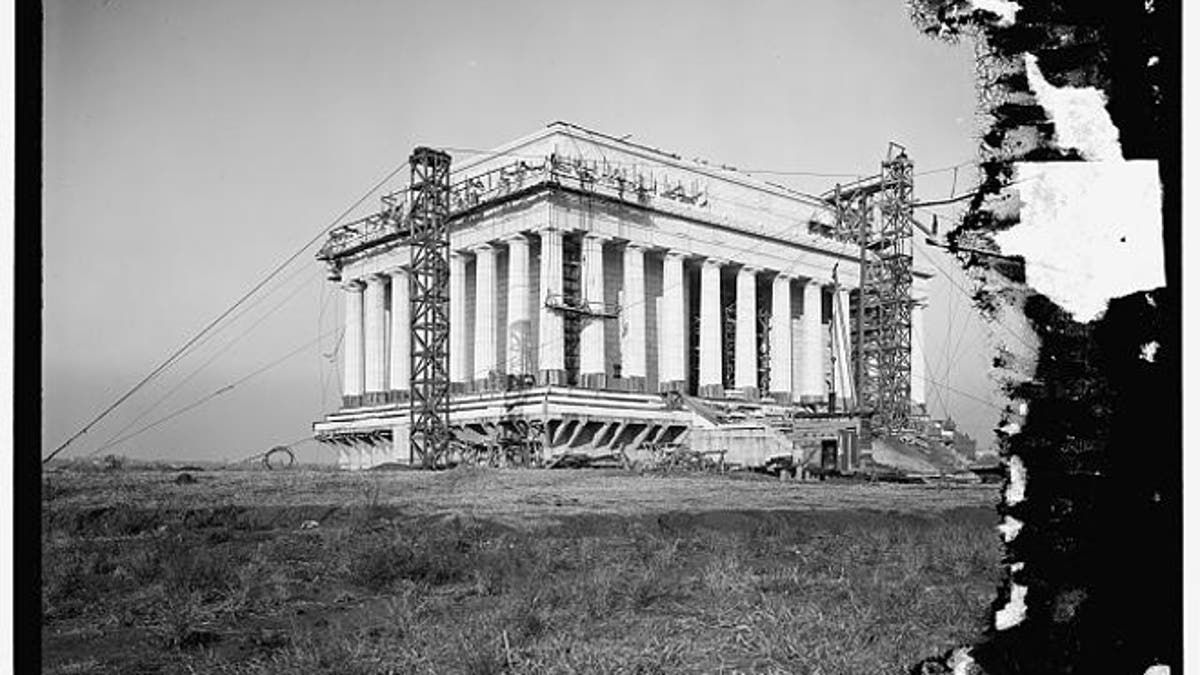
(Library of Congress)
The Lincoln Memorial was dedicated to the nation’s 16th president on Memorial Day, May 30, 1922. About 50,000 people attended the ceremonies, including hundreds of Civil War veterans and Robert Todd Lincoln, the president's only surviving son. New York architect Henry Bacon designed the memorial to be in the style of a Greek temple.
4. St. Louis Gateway Arch
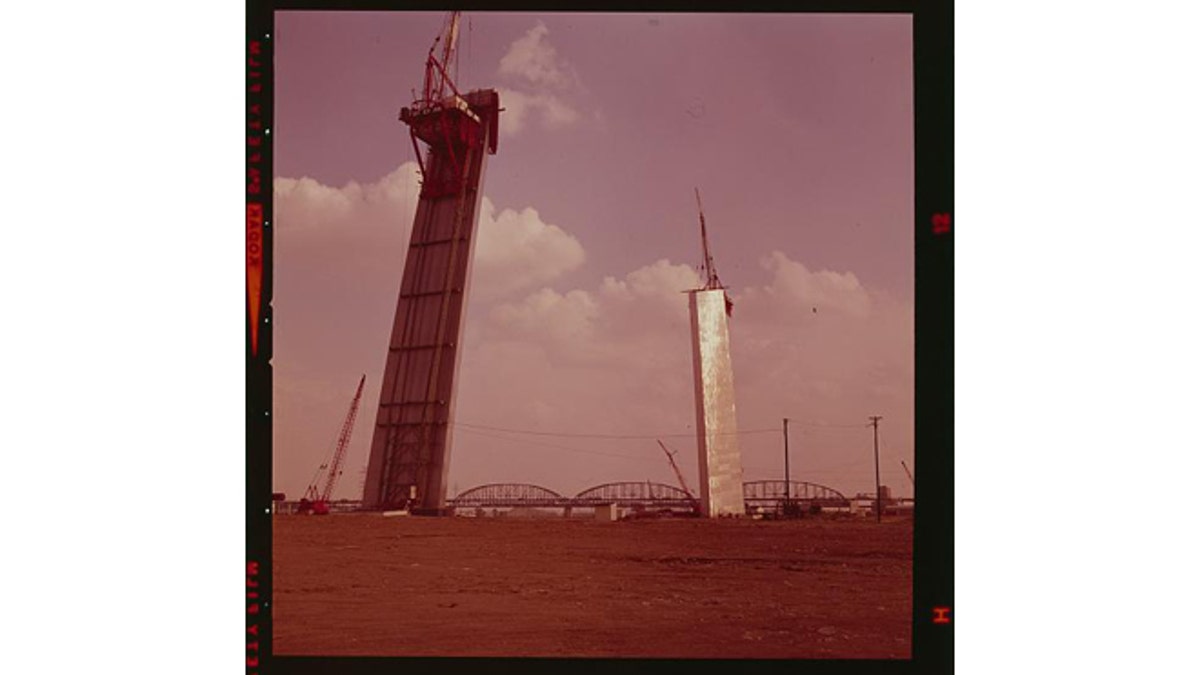
(Library of Congress)
From 1947 to 1948, there was a nationwide competition to design a monument in St. Louis honoring western pioneers. The winning architect, Eero Saarinen, modeled his design in a sleek, stainless steel arch. Construction began on the banks of the Mississippi River in St. Louis, Missouri, on February 12, 1963, and was finished on October 28, 1965.
5. Mount Rushmore
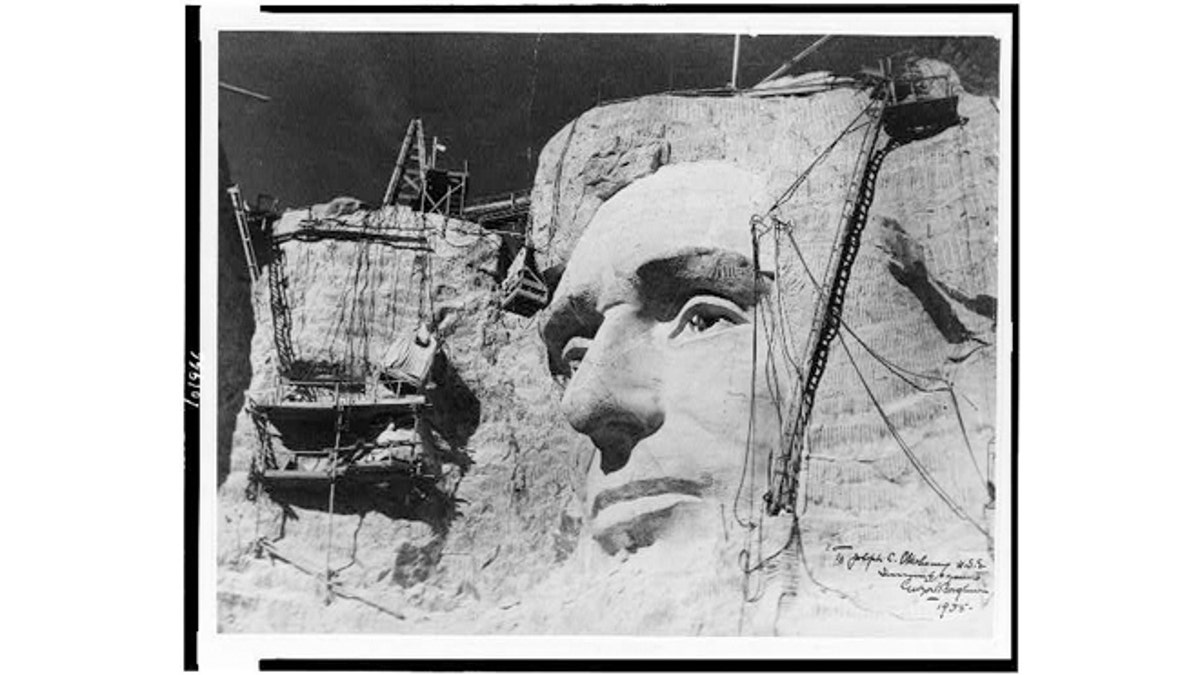
(Library of Congress)
Sculptor Gutzon Borglum began work on Mount Rushmore in South Dakota's Black Hills National Forest in 1927 and the project was finally completed in 1941. The site features four mammoth carved sculptures, depicting the faces of U.S. Presidents George Washington, Thomas Jefferson, Abraham Lincoln and Theodore Roosevelt. Each head reaches a height of 60 feet. To build the sculpture, roughly 400 workers removed a total of 450,000 tons of rock under extremely dangerous conditions.
6. Empire State Building
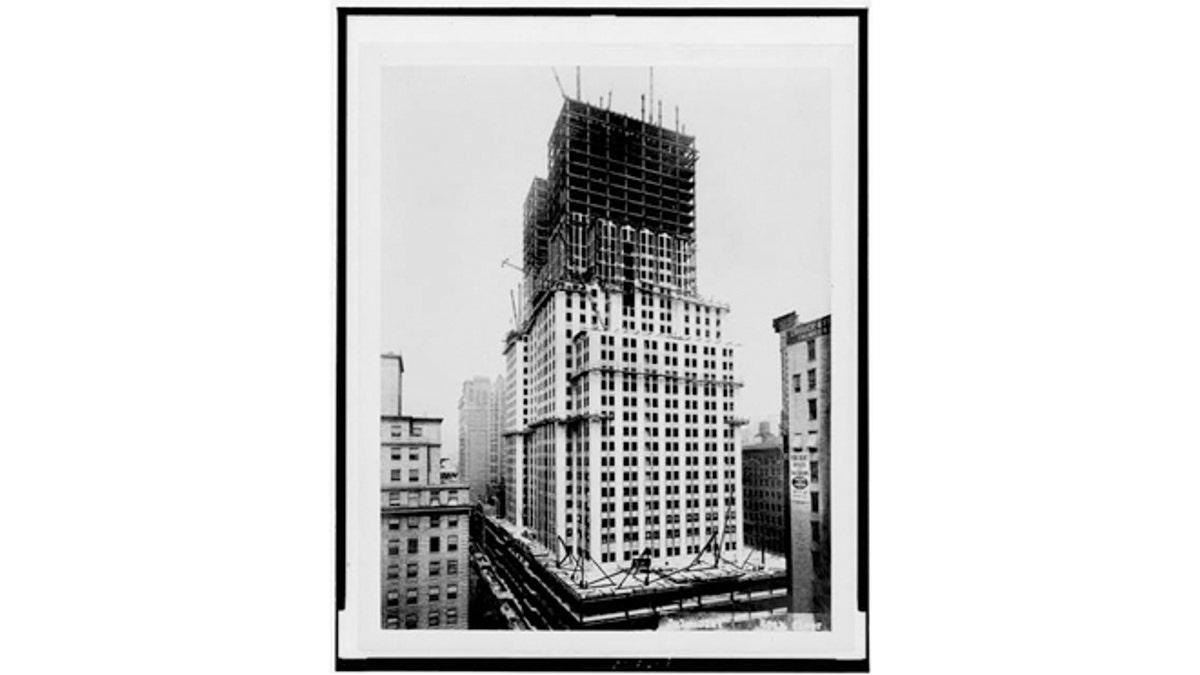
(Library of Congress)
When the Empire State Building opened on May 1, 1931, it was the tallest building in the world, standing 1,250 feet tall. It has since become a national icon and a symbol of twentieth century man's attempts to achieve the impossible.
7. Hoover Dam

(Library of Congress)
At 726 feet high and 1,244 feet long, Hoover Dam was one of the largest man-made structures in the world at the time of its construction. Originally known as Boulder Dam, later renamed in honor of President Herbert Hoover, the concrete structure was built in the 1930s to prevent flooding and provide irrigation and hydroelectric power to arid regions of Midwestern states.
8. Manhattan Bridge
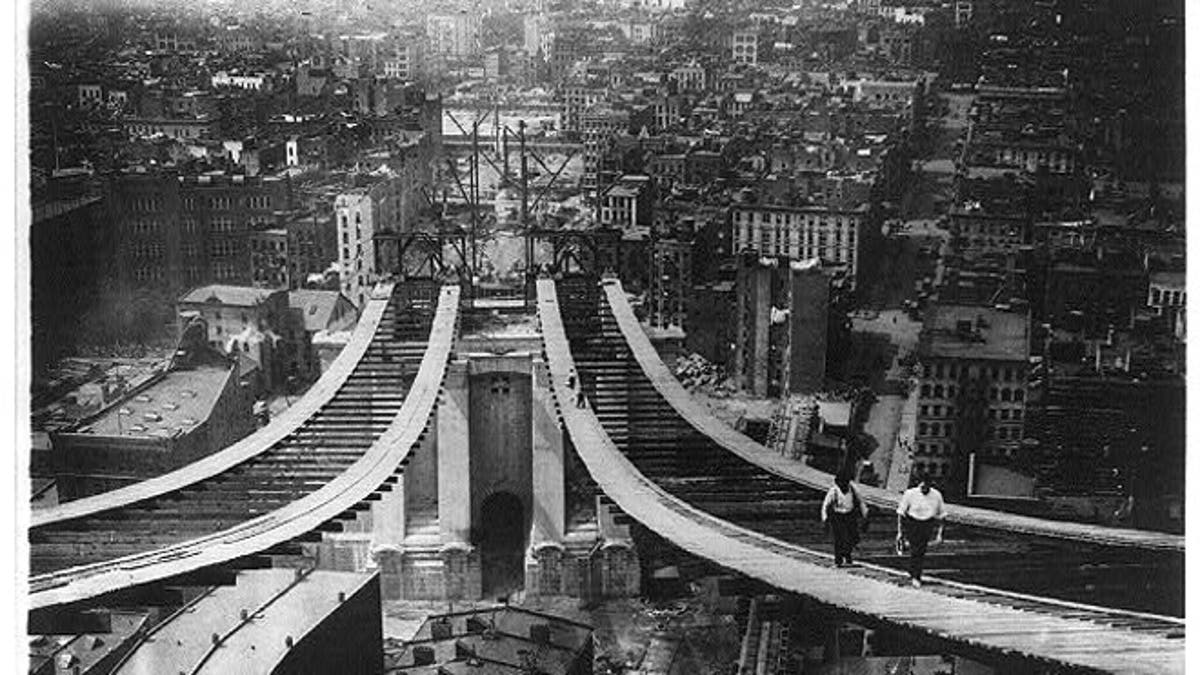
(Library of Congress)
Construction began on the Manhattan Bridge on October 1, 1901. The 7,000 foot long suspension bridge, with its seven automobile lanes and two subway tracks, opened to traffic on December 31, 1909. While maybe not as famous as the Brooklyn Bridge, the Manhattan Bridge has been heavily trafficked since it first opened and its two historic subway tracks have remained relatively unchanged since they were first opened.
9. Washington Monument

(Library of Congress)
Designed by Robert Mills and eventually completed by Thomas Casey and the U.S. Army Corps of Engineers, The Washington Monument honors the nation’s first president, George Washington. Completed in two phases of construction, one private (1848-1854) and one public (1876-1884), the monument was built in the shape of an Egyptian obelisk. When completed, the Washington Monument was the tallest building in the world at 555 feet, 5-1/8 inches.
10. Statue of Liberty
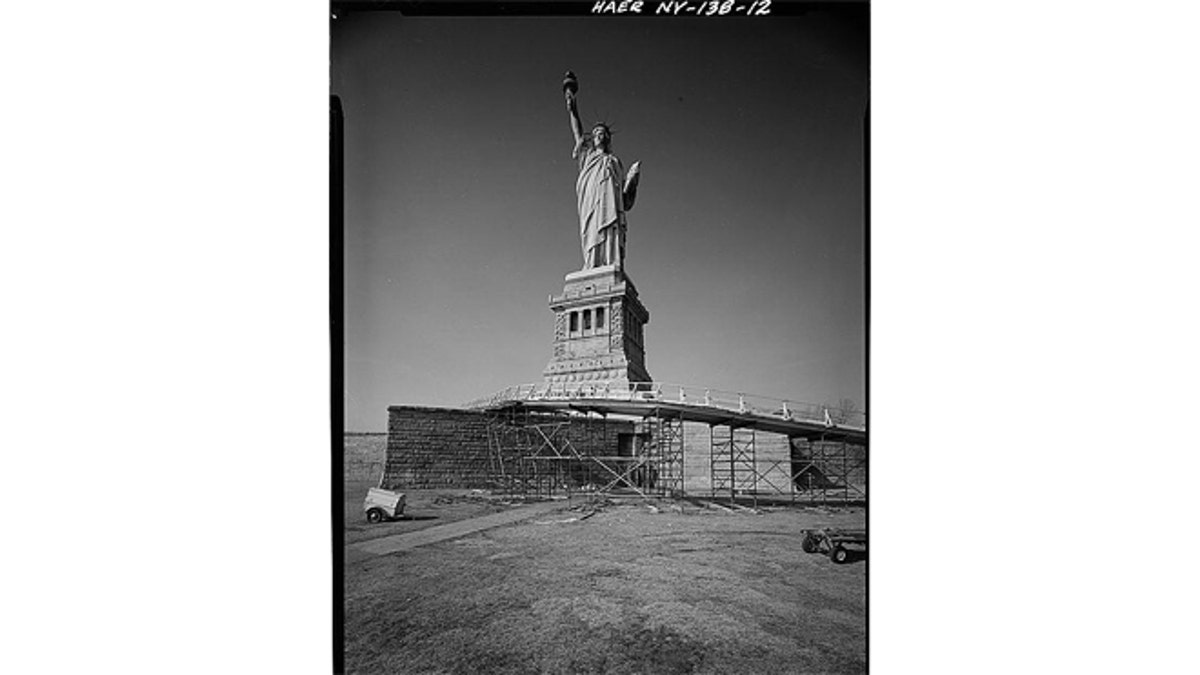
(Library of Congress)
Given to America in an act of friendship from France, The Statue of Liberty was crafted by sculptor Frederic-Auguste Bartholdi, who created the façade from sheets of hammered copper, and Alexandre-Gustave Eiffel, the man behind the Eiffel Tower, who molded the statue’s steel framework skeleton. The statue was erected on a small island in the Upper New York Bay, now known as Liberty Island, and dedicated by President Grover Cleveland in 1886. The landmark still remains a symbol of freedom and democracy today.
